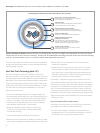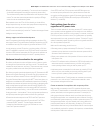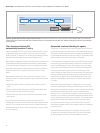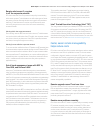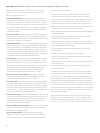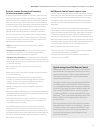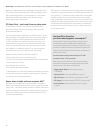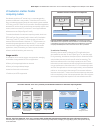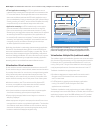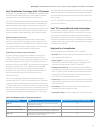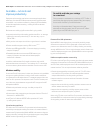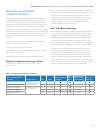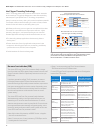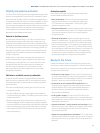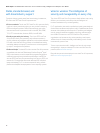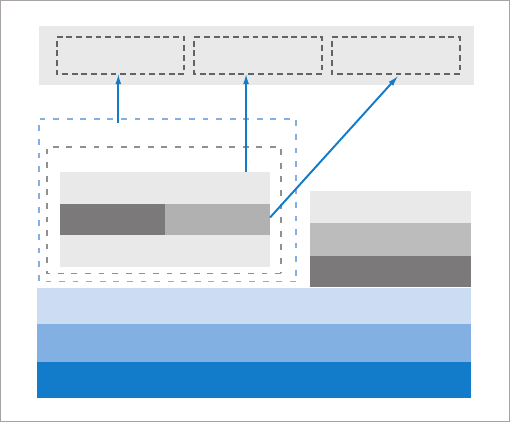
20
White Paper: The All New 2010 Intel® Core™ vPro™ Processor Family: Intelligence that Adapts to Your Needs
• OS and application streaming: the OS and applications are not
installed locally. Instead, the OS and applications are streamed to the
PC across the network. Critical application data can be stored at the
data center, traditional problems with OS and/or application corrup-
tion are remediated by simply re-streaming the “gold” software image.
Security, patching, and other IT services are also simplified, since they
are performed only on the software image at the data center.
• Application streaming: the OS is installed locally, but the applica-
tions are streamed from the datacenter to the user on-demand.
Data can be stored locally or at the data center, based on IT policy.
Streaming only the applications reduces the network load, as opposed
to streaming both the OS and applications. Also, applications can
be cached for off-network use on laptops. The terms “application
streaming” and “application virtualization” are sometimes used inter-
changeably, but they are different. Streaming is the technique
to deliver applications over the network.
Application virtualization is a technology that abstracts the application
from the OS. Virtualized applications have full access to OS resources,
but do not install themselves in the OS registry or system files. This can
reduce many of the management issues and application conflicts that
result from traditional installation. PCs with a new Intel Core vPro proces-
sor support both OS streaming and application streaming. Application
streaming products are available from several software vendors.
Virtualization: Virtual containers
Virtual containers are self-contained virtual machines on the local PC.
Virtual containers let you create individual, isolated work environments
for a variety of scenarios. You can also use a managed virtual container
to fully isolate and protect corporate data from personal data. This
would allow you to increase security as necessary for sensitive infor-
mation without frustrating users in their personal use of the system.
With virtual containers, the PC has at least one fully featured OS,
and one or more additional, environments that are self-contained
and used for specific purposes. For example, you could:
• Use virtual containers to separate locked-down corporate applica-
tions from more loosely-governed personal applications.
• Deploy a highly managed, limited-access image to a contractor or
temporary employee.
• Allow employees to bring their own laptops into the office and use a
managed virtual container to provide their applications. The virtualiza-
tion software would abstract differences in the hardware, reducing
the burden of validating the corporate image against the myriad of
hardware combinations employees might be using.
Microsoft Windows*
BIOS/EFI supporting
Intel® vPro™ Technology with Intel® Virtualization Technology
PCs with Intel® vPro™ Technology
Virtual private
Network
Microsoft Windows XP*
Managed Virtual Container
Personal data
Consumer security layer
Consumer applications
Virtual machine
policy management
Streaming
management
Data storage
and management
Corporate data
Streamed applications
IT security and management layer
Figure 7. Application streaming. Intel® Virtualization Technology
supports OS and application streaming, a next-generation standard
practice for managing, securing, and delivering applications to users.
Virtualization: Multiple OSs (traditional model)
The traditional model of virtualization gives the user access to multiple
fully functional OS environments running in separate virtual machines.
For example, the PC could have Microsoft Windows XP* and Linux*
running side-by-side. This type of virtualization is also seeing signifi-
cantly improved performance from the recent advances in Intel VT.
Traditional virtualization has typically been used:
• By software developers and support staff who need to work in
more than one OS environment but do not want more than
one PC on their desk.
• For OS migration, by keeping unportable legacy applications
running in an earlier OS, while moving the rest of their
applications over to Windows 7.
Traditional virtualization usually requires that you install a VMM soft-
ware package from a vendor like VMware or Parallels, then build OS and
applications images on top of the VMM software. Intel VT is enabled
today in VMM packages from vendors such as VMware and Parallels.



